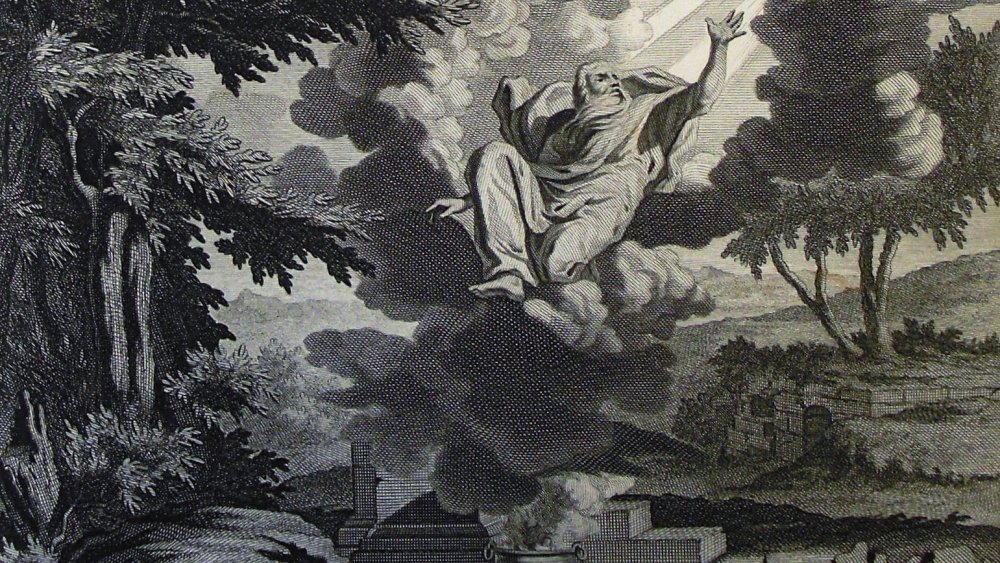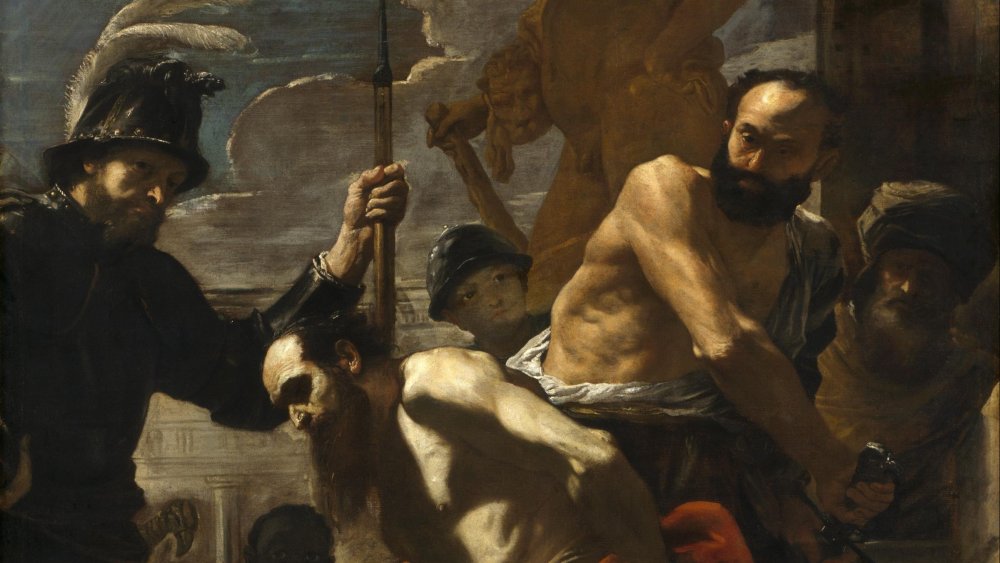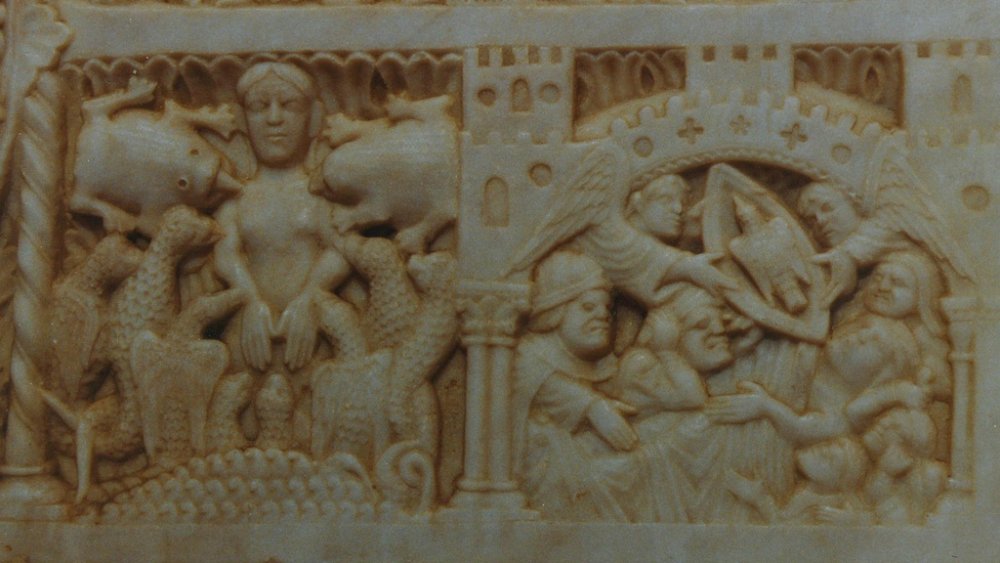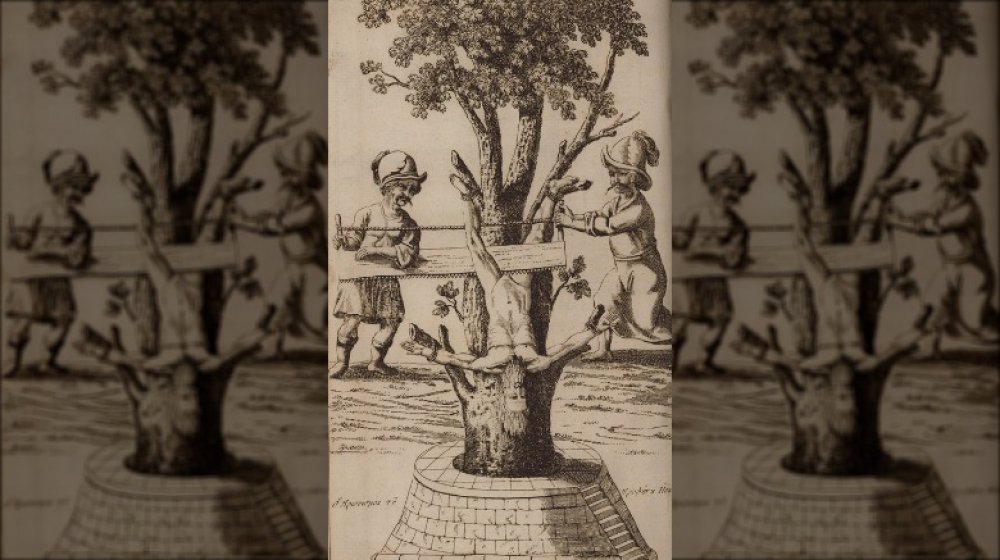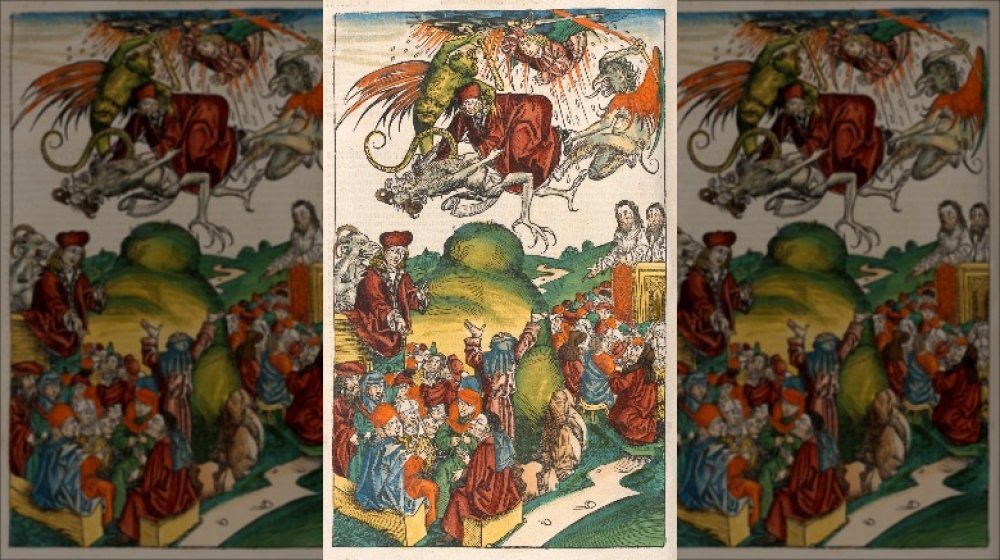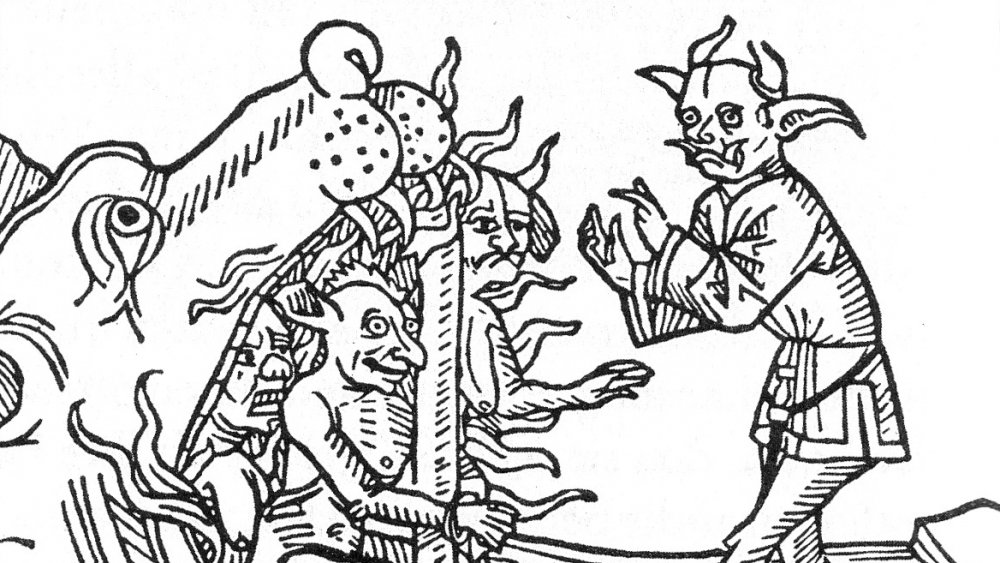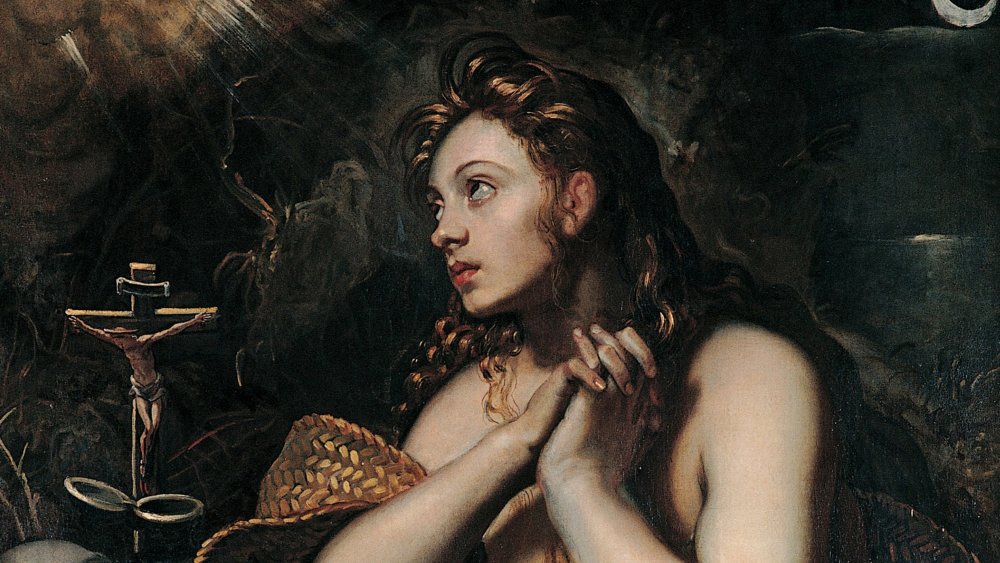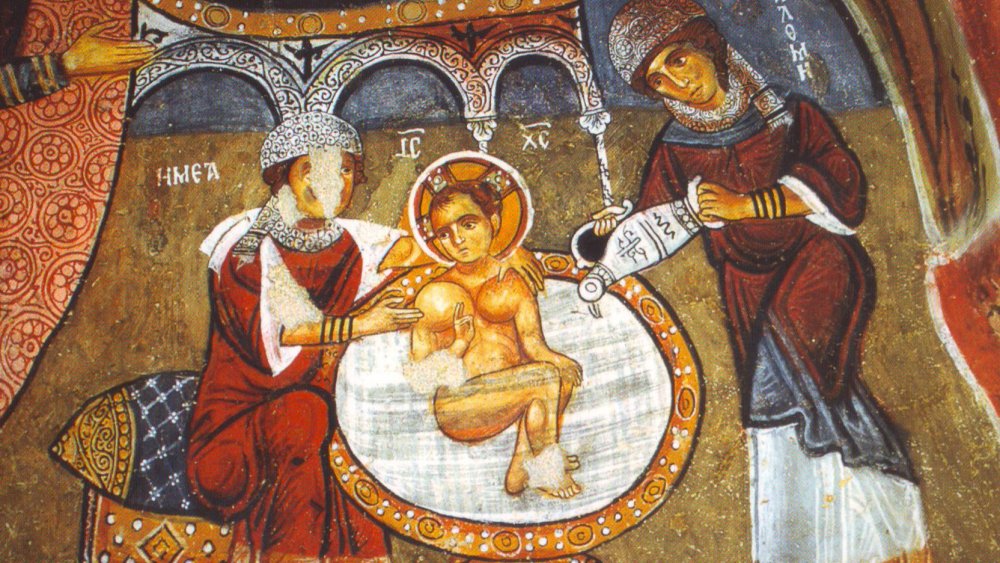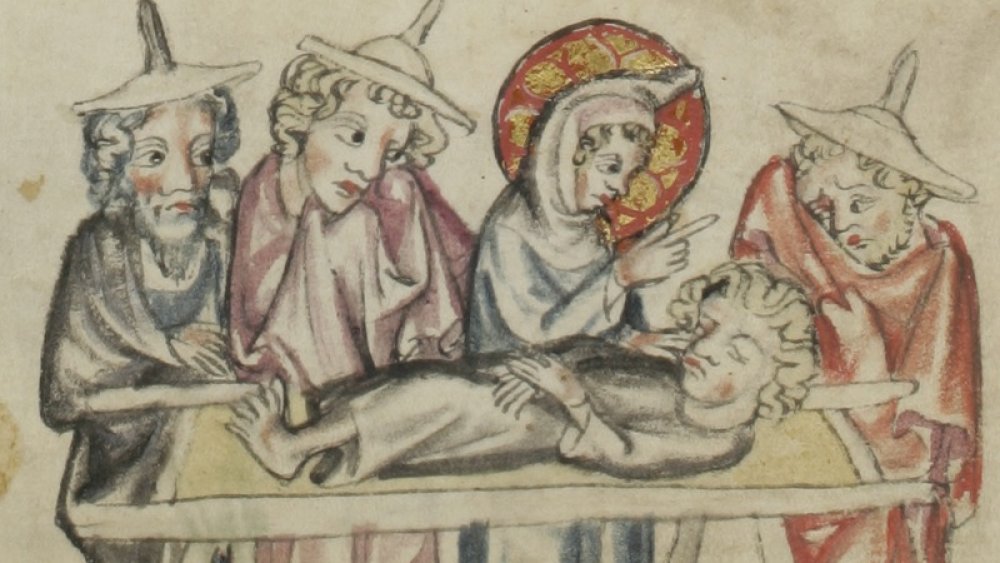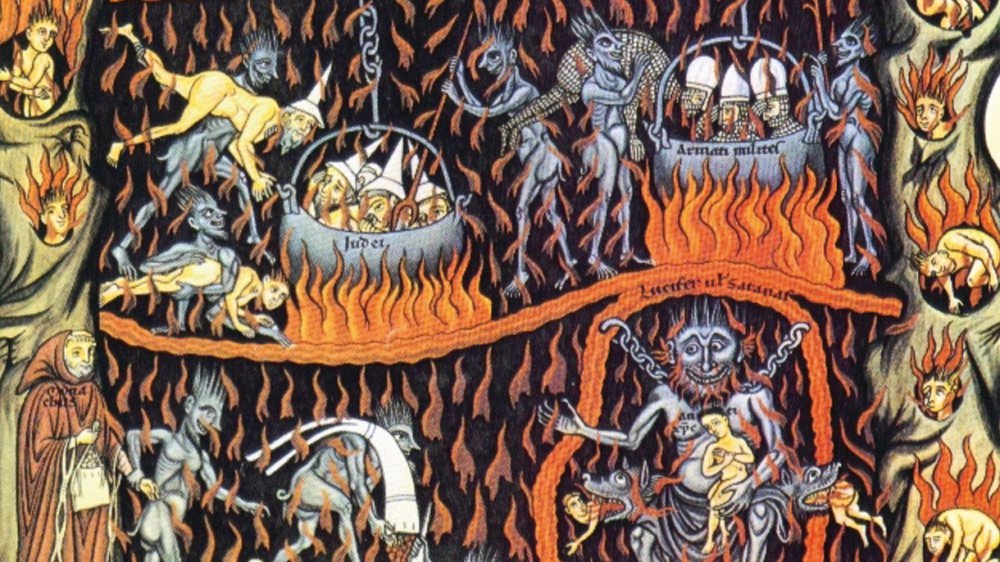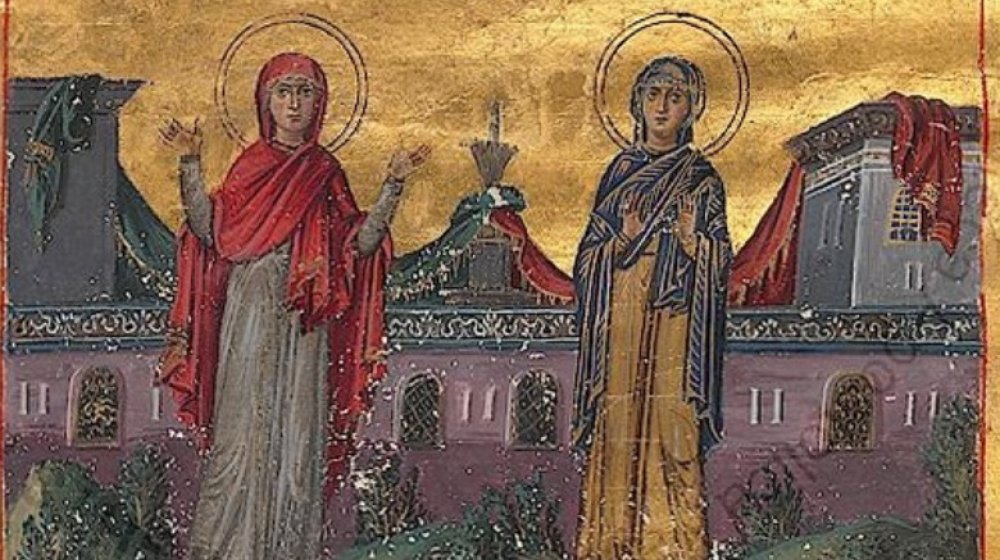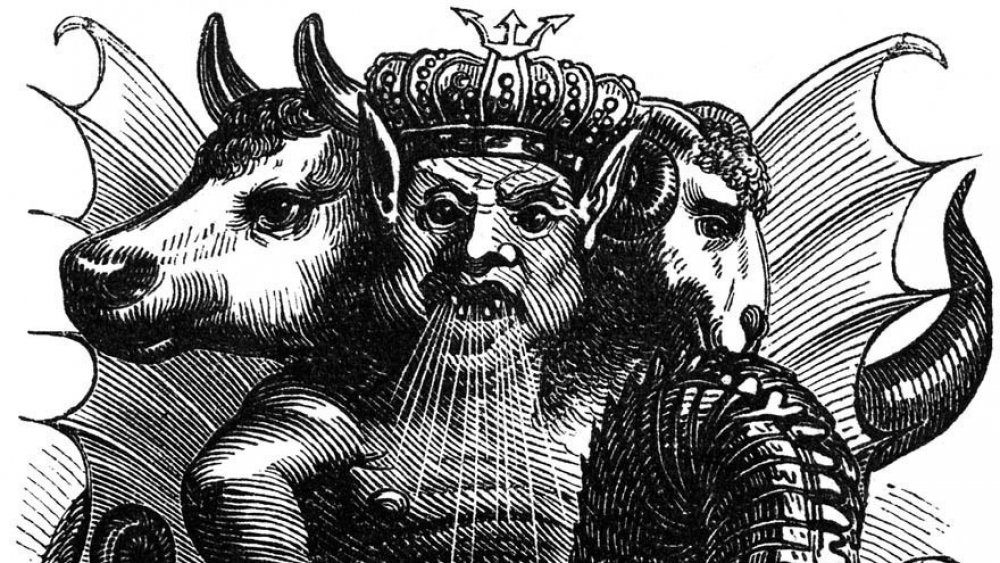The Craziest Stories That Didn't Make It Into The Bible
The process of finalizing the biblical canon was a long and arduous one that took hundreds of years of arguing before a tradition more or less fell into place, but even then, a lot of disagreement remains over which books are scripture, and not every church has the same list of Bible books. In fact, during the first several centuries of the Christian era, lots of different books popped up claiming to be true stories of the Apostles or to contain secret knowledge of Jesus's true intentions or whatever.
These books were rejected by either rabbis or church fathers for various reasons and have been labeled with such terms as apocrypha ("hidden" or "secret" things), pseudepigrapha (books that falsely claim to have a famous author), or antilegomena (disputed books). The reasons for these books being rejected might range from a subtle heresy — a disagreement about the nature of the Trinity, for example — to events that strain credulity, like a truly staggering number of stories about talking animals, for example. In other words, some of the stories that didn't make it into the Bible are absolutely bonkers, so here are a few of the craziest tales you're not likely to learn in Sunday school.
Enoch didn't make it into the Bible because of those cannibal giants
To be fair to the First Book of Enoch, it technically is part of the Bible, but only if you're a member of the Orthodox Tewahedo churches of Ethiopia and Eritrea. It's an assembly of various Hebrew texts written between 300 BCE and 100 CE, but the only complete manuscripts today are in Ge'ez, which sounds like a Game of Thrones language, but is actually an ancient Ethiopic language.
The Book of Enoch exists to answer a couple of unanswered questions left from the book of Genesis, with the first being the fate of the titular Enoch, Noah's great-grandfather who was said to have been such bros with God that the Lord took him up to Heaven instead of letting him die. And the second unanswered questions is about the Nephilim, some of the craziest creatures in the Bible. This mysterious race is said to have been the children of the sons of God and the daughters of men. According to Enoch, these sons of God were fallen angels who fell in love with human women and taught them forbidden arts, such as magic, astrology, metalworking, and cosmetics. Their offspring were the Nephilim, cannibalistic giants who were over two miles tall. Enoch reveals the real reason for Noah's flood was to purge the Earth of these bloodthirsty mistakes.
The rest of the book is Enoch's psychedelic trip through Heaven and Hell, where he witnesses the literal clockwork of the universe and sees that all of God's stuff is made of crystal and fire.
The Acts of Paul tells the crazy story of Paul's friendship with a talking lion
The Acts of Paul is a second-century entry into the popular genre of apocryphal acts of the apostles, showing what Jesus' friends got up to after he peaced out back to Heaven. This one would've originally been about three times as long as the canonical Acts of the Apostles, but as it stands, we currently only have fragments representing different sections, including Paul's interactions with Thecla, a third letter to the Corinthians, and the extended story of Paul's martyrdom by the emperor Nero. According to this version of the story, when Paul was beheaded, milk spurted out of his neck stump instead of blood, and then Paul's ghost appeared to Nero to prophesy the emperor's own death.
But perhaps the most interesting passage comes from a fragment in which Paul is walking toward Jericho when an enormous lion comes out of a graveyard. But rather than attacking Paul, the lion speaks with a human voice and asks to be baptized. Paul baptizes the lion, and the beast runs off into the woods and rejects the advances of a lioness as he is now a Christian, committed to celibacy. Later, Paul is thrown before beasts by the people of Ephesus only for the lion to turn out to be his friend from before, who lies down and licks his feet. Then God causes a giant hailstorm that kills most of the other people and animals in the amphitheater.
An act of God saves Thecla from man-eating seals
Chances are good that the Acts of Paul and Thecla would've originally been a part of the larger work called the Acts of Paul, but it was popular enough to have been distributed on its own. The work is notable for featuring a female protagonist with more agency than is common for women in biblical texts. In fact, despite the popularity of the text among early Christians, the church fathers argued against its inclusion in the canon because it said that women should be allowed to preach and baptize, a topic that's still controversial in some churches today.
In the story, Thecla is a young noblewoman who overhears Paul preaching on chastity and thereafter dedicates herself to his message. Her pagan mother then has her daughter sentenced to burn at the stake, but God puts out the flames with a sudden storm. She's later stripped and thrown before beasts to be devoured, but she's protected by a fierce lioness. Thecla then determines to baptize herself by diving into a tank of man-eating seals. God rescues Thecla from these improbable creatures by striking them with lightning and then covering up Thecla's nakedness with a shroud of fire. Thecla eventually lives to age 90, when she escapes some young men who come to attack her by ghosting through a cave wall and making her way to Paul's grave, where she dies happy.
The Ascension of Isaiah sees the prophet sawed in half
The Ascension of Isaiah is a work that comprises multiple Jewish and Christian texts from between the first century BCE and the third century CE. It tells the story of the martyrdom of the prophet Isaiah by the wicked king Manasseh, as well as Isaiah's angel-led tour throughout the Seven Heavens. In the first section, Isaiah is accused of treason by a false prophet spurred on by the demon Beliar, and even though Isaiah tries to hide (according to the Talmud, Isaiah speaks the secret name of God, which causes him to be swallowed up by a cedar tree, but the fringes of his clothes stick out of the tree, giving him away), Manasseh finds him and has him sawed in half, lengthwise. Despite this gruesome execution, he continues prophesying against the king until the moment the saw reaches his mouth. Perhaps surprisingly, this story is referenced in chapter 11 of the canonical New Testament book of Hebrews.
In the second half of the book, Isaiah is taken by an angel through the various levels of Heaven, where he sees fallen angels warring with each other, various thrones and choirs of angels, and the righteous dead, including Abel and Enoch. In the most Christianized portion of the text, he sees Jesus disguise himself as an angel and descend through the various heavens towards Earth, speaking a magical password that opens the gates to each one.
The Acts of Peter didn't make it into the Bible, but it features some epic magical battles
In the canonical Acts of the Apostles, St. Peter comes into conflict with a wizard from Samaria named Simon Magus, who's trying to buy Holy Ghost powers from the apostles with money. The apocryphal Acts of Peter expands on this conflict by leading Peter and Simon into an increasingly wild series of wizard battles. At one point, Peter miraculously teaches a dog to talk and then sends him to Simon's house specifically to tell him he's a garbage person. The dog eventually trashes Simon so hard that when he's finished, he (the dog) lies down and dies. After a scene in which Peter publicly embarrasses Simon by proving that he hadn't actually raised a dead man to life but was only moving his body like a puppet, the rivalry culminates in a scene in which Simon tries to prove that he's God by flying above the crowds. Peter prays to God, cutting off the source of Simon's demonic power, and the wizard crashes to the ground, shatters his legs, gets stoned by the hostile crowd, and then gets cut into tiny bits by two quack doctors.
Later, after upsetting the Romans by teaching their girlfriends the virtue of chastity, Peter flees the city to save his own life, only to be shamed into returning by the ghost of Jesus. He turns himself in and requests to be crucified upside-down so he doesn't look like he's copying Christ.
Mary's hot date nearly destroys the world in the Questions of Bartholomew
The Questions of Bartholomew, also known as the Gospel of Bartholomew, is a book in which the relatively minor apostle Bartholomew is the only one with the guts to ask the post-resurrection, pre-ascension Jesus the hard questions about the nature of existence. First, he asks Jesus why he saw him disappear from the cross during the crucifixion, to which Jesus responds that he had actually dipped down to Hell for a minute to bust down the gates and lead Adam (of Adam and Eve fame) and all the righteous dead up into Heaven. Later, Bart and the other apostles ask Mary about her relationship with her son, and she agrees to tell them about her first date with God, but only if they hold her legs and breasts securely so that she doesn't crumble into a pile of bones. As it happens, the story is still so hot that her mouth spews fire that threatens to consume the world until Jesus stops it.
Later, Jesus rolls back the surface of the Earth so the apostles can see into Hell, and then he brings the apostles to see Satan, whose appearance is so horrible that all the apostles die and Jesus has to bring them back to life. He tells the newly resurrected Bartholomew to stand on Satan's neck and ask him whatever he wants. This book also reveals that Satan has a son named Salpsan, which is never followed up on anywhere.
The super gross secrets of the Eucharist in the Questions of Mary
Some apocryphal texts are so crazy that they don't even exist anymore. They were pretty much successfully wiped out, and the only way we know about them is through more orthodox church leaders talking about how terrible they are. One such text is a work known as the Questions of Mary, which we only know about because of the fourth-century bishop Epiphanius of Salamis writing about it in a work about various heretical texts popular at the time.
According to Epiphanius, the Questions of Mary is a dialogue in which Jesus takes Mary Magdalene out to a mountainside, where he produces a woman from out of his own side, like Eve splitting off from Adam. Jesus then begins having sex with this woman in front of Mary, and then finishes by eating his own ... well, you know, the byproduct of doing that. Mary is so shocked by this that she actually dies, but Jesus raises her back to life and actually blames her for having too little faith. He then explains that when he said you would see the Son of Man ascending up where he had been before (this is in real Bible, in John chapter 6), he was actually talking about eating his own ... you know. Furthermore, he says this is what he really meant when he said the apostles would drink his blood, and the flesh he said they would eat was actually his poop.
Don't doubt Mary's purity in the Infancy Gospel of James
You might think you know the Christmas story, with Caesar and the census, Mary and Joseph, the inn and the manger, the shepherds and wise men. Linus recites it on TV every year. But a second-century text known as the Protevangelion or the Infancy Gospel of James tells a version of the story you've probably never heard before.
The early portions of the book focus on the birth and childhood of Mary, emphasizing her ritual purity from birth, how her feet never touched the ground and she was hand-fed by angels and such. Further, it makes clear she remained a virgin for life by depicting Joseph as an elderly widower who no longer has any interest in romance and who only reluctantly agrees to marry Mary when God makes a bird fly out of his walking stick.
When the Nativity narrative begins, Mary and Joseph have holed up in a cave in Bethlehem, and Joseph goes out to find a midwife. At the moment of Jesus' birth, all of time stops and Joseph sees birds frozen in midair, among other sights. The midwife he brings back to the now glowing cave refuses to believe in the virgin birth and sticks her hand down to feel around Mary's undercarriage for proof. What she pulls back is a burnt stump, as Mary's downstairs situation has seared her hand off. Don't worry, though. The baby Jesus heals it. Put that in your next Nativity pageant.
The crazy story of young Jesus' reign of terror
The canonical Gospels of Luke and Matthew tell of the circumstances of Jesus' birth and then a brief episode at the Second Temple when he was 12, but otherwise, the regular Bible largely skips to 30-year-old Jesus beginning his ministry. This might leave some readers wondering what Jesus was like as a boy. The second-century Infancy Gospel of Thomas exists to fill in those blanks, and the answer is that toddler Jesus was a super-powered problem child.
According to the book, from the ages of five to 12, the young Jesus leads a life of death and mayhem that terrifies the parents of Nazareth. First, he curses a boy to death for messing with a puddle he was playing in, then another for bumping into him. When the parents in town complain to Mary and Joseph about the boy's murders, he strikes them all blind. He also kills not one but two teachers who get mad at him for being a know-it-all. To be fair, he does reverse most of these murders after his parents reprimand him. He does also perform some non-murder miracles, such as resurrecting his friend who fell off a roof, healing a man who chopped off his own foot, stretching out planks of wood when Joseph makes carpentry mistakes, and exploding a snake with mind bullets after it bites his brother. Boys, it seems, will be boys, even when they're the sons of God.
Hell sounds weird and gross in the Apocalypse of Peter
The Apocalypse of Peter is a second-century text that appears on the Muratorian fragment, a list of the oldest surviving New Testament books. However, the list goes on to say that it's probably better if no one reads it. Given the contents of the book, it's maybe not so surprising that it might've been found distasteful by the church fathers.
The book purports to be a vision granted to the Apostle Peter by the risen Christ, in which he gains a clear vision of Heaven and Hell, a recurring theme in apocryphal texts. Heaven, perhaps appropriately enough, is pretty chill. Everyone there is beautiful and wears glowing white clothes like angels, all while singing prayers and wandering over ground that blooms eternally with fragrant spices.
Hell, on the other hand, is a nightmare world of people receiving ironic punishments like the denouement of a Tales from the Crypt story. Blasphemers are hanged by their tongues, which is simple enough. But adulterous men are hung by their feet with their heads buried in muck. Women who had abortions are buried up to their necks in poop, and the ghosts of their unborn babies shoot them with lightning from their eyes. Gay men and lesbians are thrown off cliffs over and over. Some sinners are hunted down by monsters formed of congealed breast milk. To be honest, it sounds like Hell is to be avoided, if at all possible.
Owning pagans and fighting demons in the Acts of Xanthippe, Polyxena, and Rebecca
Most of the works in the genre of the apocryphal Acts of the Apostles focus on one or two apostles having adventures and usually getting killed at the end. The third-century text known as the Acts of Xanthippe, Polyxena, and Rebecca, however, focuses largely on two sisters (despite being named in the title, Rebecca is actually just a minor character) and their dramatic adventures which feature cameos from a pretty good number of the Twelve Apostles.
The work splits pretty cleanly into two parts, with each part focusing on one sister. Xanthippe's story sees her wishing to convert to Christianity after an account of Paul's preaching from a dying servant causes all the idols in her house to fall down. When her husband refuses to let her be baptized and locks her up, she escapes but is soon attacked by a horde of demons wielding fire and lightning. Paul shows up and rescues her, and she's finally baptized.
The second half is somehow crazier. Xanthippe's sister, Polyxena, receives a vision of being eaten by a dragon that causes her to want to convert, but she's kidnapped by pirates before she can be baptized. She's ultimately saved when the Apostle Philip shows up armed only with a cross and 30 servants but still manages to kill 5,000 trained soldiers. Don't worry, this story also features a cameo by the Apostle Andrew and a talking lion.
It's easy to see why demon slavery didn't make it into the Bible
Being a compilation of various Jewish texts that likely didn't reach its completed version until the medieval period, the Testament of Solomon was too late to have ever possibly be in serious contention for biblical canon, but the contents of the book would've kept that issue from coming up. That said, it's still one of the most influential works of demonology ever written, and pretty much any such work that came after it was at least partially inspired by it.
In the text, King Solomon gets mad at a demon for sucking all the vital juices through the thumb of his favorite boy, and so he prays and receives from the archangel Michael a magical pentagram ring that allows him to control all of the creepiest demons. Once he has this power, he uses the demons for the most obvious possible thing: indentured servitude. He summons the evil spirits one by one and puts them to work constructing his great temple. Some of the demons are familiar, like Beelzebub and Asmodeus, but some of the others include a female demon who strangles men with a noose and who was born from the echo of a man making a boom-boom in the woods. One demon is a winged dragon whose preferred MO is, you know, coming in through the back door and making women fart. Demons are weird, man.

